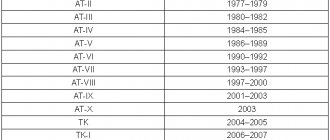Who are employees and workers?
- Employees
- non-manual workers employed in such segments of the economy as public administration (officials, top management), industry (designers, engineers, planners, secondary personnel), education (teachers, graduate students), service sector (tour manager, IT -specialist), trade. This social group is related by such common features as the need for specialized (most often higher) education, the absence of heavy workloads, and the need to use a creative approach in solving assigned problems. - Workers
are the holders of labor resources employed in the production sector of the economy and engaged in manual labor. These include both the traditional “working class” and assembly line production employees, drivers, and builders. Workers do not own the means of production and most often receive wages on a piece-rate basis.
Professions and specialties
This classification of personnel is especially interesting. A profession is represented by a type of work activity, the implementation of which may require special knowledge and skills.
A specialty is a fairly narrow subtype of work activity within a profession. Thus, the profession of a turner itself can cover such specialties as a rotary turner, a boring turner, etc.
The professionalism of the personnel always depends both on the specifics of the activity, products and services, and on the level of technical condition. Each industry is characterized by the presence of specialties. At the same time, there are common professions of employees and workers. An example is the food industry, which has about 850 specialties and professions. However, only a few of them are specific to this industry.
Difference between employee and worker
So, the characteristics of the work of social groups differ significantly. Starting with the fact that employees most often work “from 9 to 6,” and workers work around the clock, but in shifts. The locations of social groups differ significantly. For a worker, this is a machine, a construction site, a workshop where he creates a real product that can be counted and measured by physical means. For employees, their place of work is a cabinet in an office or a desk. There he creates a “mental” product that can be calculated speculatively.
Employees of the profession - list
There is a unified classifier of white-collar professions in the form of the ECSD directory. The list of workers' professions and office positions includes 35 issues. It includes the following positions in various variations:
- agents;
- educators;
- duty officers;
- cashiers;
- commandants;
- controllers;
- medical personnel;
- educators;
- operators;
- security guards and caretakers;
- secretaries;
- police officers and detectives;
- taxi drivers and forwarders.
The differences between an employee and a worker are as follows:
- Qualification. In most cases, workers need a secondary specialized education, while employees need a higher education.
- Means of production. Workers use “manual” labor tools, employees use “intellectual” ones.
- Product of labor. A worker produces real quantifiable objects, an employee provides services.
- Prestige. The work of an employee is considered more honorable than that of a worker.
- Features of the working day. Employees, as a rule, work from 9 am to 6 pm, production workers work around the clock in shifts.
A paradoxical situation has formed in the labor markets of individual countries: people no longer want to earn a living with their minds, since “manual” professions are paid better and do not require so much emotional investment. That is why it is necessary to clearly understand the difference between workers and employees. This will help you choose work to your liking, which will be suitable not only in terms of payment, but also in other respects.
Profession civil servant
Just as the professions of workers and the positions of employees differ, the position of a civil servant is also distinguished. Such people work in various ministries and government agencies. Their job is not to sell services, but to control this process. They are guided exclusively by legal norms.
The working day of a civil servant includes several mandatory stages:
- maintaining correspondence and studying current news;
- making important decisions;
- control over the actions of subordinates;
- participation in events.
Definition
Employees
– non-manual workers employed in such segments of the economy as public administration (officials, top management), industry (designers, engineers, planners, secondary personnel), education (teachers, graduate students), service sector (tour manager, IT- specialist), trade. This social group is related by such common features as the need for specialized (most often higher) education, the absence of heavy workloads, and the need to use a creative approach in solving assigned problems.
Workers
– holders of labor resources employed in the production sector of the economy and engaged in manual labor. These include both the traditional “working class” and assembly line production employees, drivers, and builders. Workers do not own the means of production and most often receive wages on a piece-rate basis.
Skill level
According to the level of qualification, employees are divided into highly qualified, qualified, semi-skilled and unskilled. They can perform work of varying complexity, and they tend to have unequal professional training.
The specified qualification characteristics of employees, along with such as age, gender, length of service and degree of labor mechanization, will serve as the basis for calculations of various types of structures. To increase the efficiency of an enterprise, it is important not only to ascertain the number of employees, but also to study a certain relationship between them.
This approach will allow not only to identify factors and their influence on the results of the enterprise’s activities, but also to calculate the corresponding structural changes with their driving forces and trends. On this basis, a real strategy for the development of labor resources is formed.
Despite the fact that over the past few decades the prestige of blue-collar professions has declined significantly and every year thousands of young people across the country receive degrees in law and economics, the situation is gradually improving. The fact is that if no one works with their hands, and everyone is a manager, then the production of anything will simply be impossible. In addition, a highly skilled worker can earn much more than his white-collar peer, while avoiding so-called professional burnout.
Comparison
So, the characteristics of the work of social groups differ significantly. Starting with the fact that employees most often work “from 9 to 6,” and workers work around the clock, but in shifts. The locations of social groups differ significantly. For a worker, this is a machine, a construction site, a workshop where he creates a real product that can be counted and measured by physical means. For employees, their place of work is a cabinet in an office or a desk. There he creates a “mental” product that can be calculated speculatively.
Categories of managers
Production managers are divided into these categories:
- Linear.
These managers make decisions affecting all functional areas of activity. Examples: general director, technical service manager, workshop manager. - Nonlinear.
These are functional managers who perform specific management functions. Examples: financial director, manager responsible for personnel.
Managers are divided by management levels:
- Grassroots level. For example, master.
- Middle level. Heads of department and workshop.
- Senior management. Director or his deputy.
Lower-level managers manage small departments, middle-level managers manage large departments, and senior managers manage the enterprise as a whole.
Conclusions website
- Qualification. In most cases, workers need a secondary specialized education, while employees need a higher education.
- Means of production. Workers use “manual” labor tools, employees use “intellectual” ones.
- Product of labor. A worker produces real quantifiable objects, an employee provides services.
- Prestige. The work of an employee is considered more honorable than that of a worker.
- Features of the working day. Employees, as a rule, work from 9 am to 6 pm, production workers work around the clock in shifts.
The division of personnel is necessary in order to determine wages and correctly allocate personnel when determining personnel policies. What groups and categories can personnel be divided into? What documents should I use? We will talk about this in this article.
All employees, regardless of the functions they perform, act as personnel of a cultural institution. In other words, the staff is a work collective.
But despite the fact that all employees are included in the staff, each of them belongs to a specific category.
↯ Attention!
New samples are available for download: ,
Such a division is simply necessary and is primarily associated with the determination of wages, which is carried out within the framework of the tariff SOT.
Main and support staff
Many business entities, in addition to their main activities, also perform functions that do not correspond to their main purpose. Therefore, there are such categories of production personnel: main and non-core activities. For example, the first group in industry includes workers of all types of production (main, service and auxiliary), as well as employees of research departments, plant management, security, and warehouses. In other words, all those who are engaged in any way in production or its direct service. The second group includes personnel registered in structures that are on the balance sheet of a business entity, but are not directly related to production. For example, kindergartens, nurseries, housing and communal services, clinics and departmental educational institutions.
The specified classification of personnel at an enterprise is needed for calculating wages and coordinating certain labor criteria with performance indicators. At the same time, the interaction of enterprises with other commercial entities and banking institutions allows us to make this grouping conditional.
What categories are the personnel divided into?
In modern legislation there is no clear formulation of such a concept as “categories of personnel”. However, there is a regulatory document that contains a separate section “Categories of Personnel”. This document is the “Instruction on statistics of the number and wages of workers and employees at enterprises, institutions and organizations.”
After reading the contents of Section No. 5, you can determine that the concept of “Personnel Categories” includes groups of workers who are united among themselves depending on the job functions they perform.
All employees of an organization are usually divided into two groups - employees and workers. Let's look at each of them in more detail. The first group combines several categories:
- Managers;
- Specialists;
- Other workers who are classified as employees
The first category includes employees holding positions of heads of institutions and heads of structural divisions, as well as their deputies. Their main function is management. In addition, all these employees have other employees subordinate to them.
- secretary;
- clerk;
- courier and others.
In other words, these workers are called support personnel - VP.
The role of specialists is performed by persons participating in the management of the organization and engaged in various types of work, where the main share is allocated to intellectual work. This includes employees of the engineering and technical service, economic department and others.
Specialists are divided into two groups:
- administrative and management personnel (AUP) – specialists performing management functions. The result of their activities is information, which is almost impossible to do without in management. These include assistants, accountants, marketers, analysts and others;
- engineering and technical workers (E&T) - whose activities are aimed at obtaining design, technological or design information in the field of technology and production techniques. These are engineers, technologists, designers and others.
The second group - workers, includes workers whose activities are directly related to the creation of material assets, carrying out repair work, and providing various types of services:
- transport;
- material and others.
Dividing personnel into categories is a very important point. It allows you to calculate wages for employees of an institution. Thanks to this division, it is much easier to carry out the placement of personnel in the case of determining personnel policies.
What documents to use when dividing personnel into categories and groups
Law No. 90-FZ introduced changes regarding professional qualification groups. These include groups of workers and employee positions, the formation of which takes into account the field of activity, as well as all the requirements necessary for the implementation of a particular professional activity.
If we talk about requirements, they usually relate to professional training and skill level.
The Ministry of Health and Social Development of the Russian Federation has issued several orders approving professional qualification groups and criteria for classifying professions and positions into qualification professional groups
According to these documents, all positions and professions are conditionally divided into several qualification groups:
- professions of workers and positions of employees that do not require professional education;
- professions of workers and positions of employees requiring primary or secondary vocational education, as well as heads of structural units that require initial vocational education;
- positions of employees requiring higher professional education with the qualification “bachelor”, and positions of heads of structural divisions requiring secondary vocational education;
- employee positions requiring higher professional education with the qualification “certified specialist” or qualification “master”, as well as heads of structural units with a higher education.
Regulatory documents defining categories of personnel can be combined into two groups - industry-wide and sociocultural.
The second includes documents that relate specifically to the cultural sphere.
4th edition, supplemented (approved by Resolution of the Ministry of Labor of the Russian Federation dated August 21, 1998 N 37)
Which positions are classified as employees: production personnel division
Working personnel are divided according to the functions performed. This article will tell you what factors influence the determination of personnel categories, which positions are classified as workers and which are classified as employees.
What categories of personnel are there?
Classification of personnel by category
There are two categories of workers: workers and employees. The second category includes:
- administrative staff;
- managers;
- engineers;
- personnel officers.
In the personnel division classifier, there are only two categories of professions, these include:
- Workers. These workers are engaged in direct production. They are engaged in the production of products in which this enterprise specializes. Moreover, they must maintain production areas in proper condition.
- Employees. These include workers who are not directly involved in the production of products, but their activities are indirectly or directly related to production. They can perform tasks that address important technology issues as well as support work.
Taking into account the categorization of personnel, it is worth distinguishing the main factors that influence the division into classes. Human resources are the most basic element of the production forces; they are the basis for the development of economic sources.
There are several main points in the production process, namely:
- performing production tasks according to skill level;
- influence of educational level;
- degree of professional training;
- advanced training in the work performed;
- what motivation leads to high-quality completion of tasks;
- Experts have found that there is a direct dependence of the financial condition of employees and the ability of the economy to be competitive on the category of working personnel.
Internal production criteria:
- products must meet the requirements of the standards;
- How the technological process is organized at the enterprise.
External production criteria:
- Influence of demographic level.
- Social moral standards.
- Legal principles.
- Criteria characterizing the market for job vacancies.
How are personnel distributed by category?
Distribution of personnel by category
External factors influencing the development of production, including the production of products in demand by society include:
- Indicator of the working-age population.
- Literacy level of workers and employees.
- In what area of employment the work is performed.
- Correct distribution of production forces.
Equally important when assessing characterizing parameters is the quantity and quality of manufactured commercial products.
Personnel are divided into the following categories:
- Labor resources. This includes the population that is capable of performing production tasks, while having a certain age and education. These are citizens directly performing labor functions, as well as potential employees.
- Other employees. These are employees with work experience and level of professional training, whose activities are carried out under a temporary employment agreement.
Business entities are capable of solving problems that do not correspond to their main purpose. Therefore, difficulties arise in determining the importance of those working in auxiliary production.
In total, two subgroups are distinguished, namely:
- those engaged in performing important tasks of the production process or directly servicing technological equipment;
- support workers performing the function of servicing the first subgroup of workers.
When calculating earnings, these points must be taken into account.
Formation of groups according to personnel categories
Personnel classification is based on the following criteria:
- Management team.
- Specialists in the structure of the organization.
- Working staff.
- Service staff.
The management team includes the following employees:
- directors and supervisors;
- management employees;
- section chiefs;
- site foreman;
- deputies in all areas.
Specialists include the following workers: accountants, economists, engineers, lawyers, sociologists, standard setters and others. Employees include: secretaries, draftsmen, agents, accountants, clerks and others.
Personnel is divided into: production and support.
Who are the employees?
Employees: who belongs to them?
Employees who work in an enterprise or organization and are engaged in mental work are employees.
These categories of people are employed in almost all production areas: mechanical engineering, construction, educational institutions and other organizational structures.
If a citizen works in the field of social protection, then appropriate education and a creative approach to completing tasks are required.
Employees also include civil servants, managers and other officials, and at industrial enterprises it is necessary to create a staff of engineers and specialists.
The activities of employees classified as employees are aimed at ensuring the normal functioning of the state apparatus, as well as providing services to the population and maintaining the state economic structure.
Of course, such work requires appropriate qualifications, which are confirmed by education. But a diploma is not always enough; it also happens that education is needed: a specialist, bachelor’s or master’s degree.
In order to competently solve production problems, it is necessary to know laws and regulations, teaching methods, as well as the ability to organize events. The position of an employee is responsible, and therefore the requirements for candidates are increased.
List by profession
The document defining the list of employees is a single classifier. The list has a total of 35 parts and includes workers in the following professions:
- educators of all institutions;
- duty officers at enterprises or organizations;
- cash register workers or cashiers;
- medical staff;
- police officers;
- detective agency workers;
- secretariat;
- logisticians;
- taxi drivers;
- control workers.
All listed professions, as well as derivatives of these positions, must have appropriate education.
About the professions “state and municipal servant”
Civil servant - who is this?
Worker and employee - these two professions differ from each other, since one produces products with his own hands, and the second solves mental problems.
Employees are often found in municipalities and other government structures; they play the role of monitoring the overall process, and do not sell their services and do not perform work.
In their activities they are guided by state regulations.
The work day of a civil servant contains several successive stages:
- Studying reliable information.
- Conducting correspondence with organizational structures.
- Ability to make important decisions.
- Ensuring control over the work of subordinates.
- Participation in social and other events.
Citizens with special education are accepted for work in municipalities, but if staffing allows, then people with a narrower specialization can be recruited. These could be accountants, lawyers, occupational safety specialists, doctors, architects and other employees. Quite often, secretaries and clerks were and remain in demand.
What is the difference between an employee and a specialist
It turns out that there is a slight difference between an employee and a specialist, so these categories of employees should not be confused:
The very definition of “specialist” contains a rather capacious concept. This employee must be able to understand his field of activity very well and know all the intricacies, since he has extensive work experience behind him or his education allows him to have such knowledge.
After completing training at a university, as a rule, the category “specialist” is assigned. Many people work in specialist positions, and their activities by profession may vary. In the structures of organizations, there are different assessments for these categories of workers: from a simple specialist to a leader.
An employee is an employee whose work activity involves solving mental problems. His main difference is that he should work for someone, for example, be a sales representative or provide services for the development of design and estimate documentation.
However, in most cases it is not possible to detect the difference between a specialist and an employee. For example, a financier will be considered not only a specialist, but also an employee at the same time.
A specialist has a social status and also performs work in a professional field. A specialist means that an employee works in his professional field, and an employee is considered a social worker.
About the category of civil service positions, watch this video:
Select it and press Ctrl+Enter to let us know.
Source: https://naimtruda.com/otnoshen/kakie-dolzhnosti-otnosyatsya-k-sluzhashim.html
Categories and groups of positions in the state civil service
Elena Samsonova Author PPT.RU January 14, 2021 The civil service has maintained leadership in the ranking of the most popular employment places for several years. The system of state and municipal bodies is a huge hierarchical structure. Obviously, the higher the position, the more attractive it is.
Let's look at the classification of civil servant positions in Russia and find out what competencies are needed to qualify for a place in this structure. ConsultantPlus TRY FOR FREE The State Civil Service (SCS) is the professional service activity of Russian citizens in positions that ensure the execution of the powers of government agencies at the federal level and the level of constituent entities, as well as persons holding government positions.
The GHS received detailed regulation after it came into force, which divides it into two levels:
- Positions of the federal civil service are established by federal law or by Decree of the President of the Russian Federation. This is the professional service activity of citizens who ensure the proper execution of the powers of federal government agencies and persons holding government posts in the Russian Federation.
- Civil service positions of the constituent entities of the Russian Federation are established by laws or other regulatory legal acts of the constituent entities of the Russian Federation. Its representatives work to ensure the uninterrupted operation of government bodies of a constituent entity of the Russian Federation and persons holding government positions in a constituent entity of the Russian Federation.
State civil service positions are divided into 4 categories and 5 groups.
Current legislation allows us to distinguish the following categories:
- Heads (and their deputies) of state bodies and their structural divisions, who are either appointed for a certain period of time or have no restrictions on the terms of their activities. They have broad administrative and administrative powers, the right to issue regulations and mandatory orders.
- Specialists. These are citizens whose essence of work is to professionally ensure that government bodies fulfill the functions and tasks assigned to them. This category has no term limits and receives work based on the results of a competitive selection.
- Assistants (advisers). Their main function is to provide comprehensive assistance to politicians - persons holding government positions and heads of government agencies. A fixed-term service contract is concluded with this category - when their boss leaves, they also leave.
- Supporting specialists. They are engaged in organizational, informational, documentation, financial, economic and economic support for the activities of government agencies. That is, unlike the previous category, these specialists perform auxiliary rather than professional functions. They work on a general basis, without any time limits.
Classification by groups - from junior to senior - shows that each of them corresponds to a set of specific official functions that a civil servant must perform.
Functional pit, or what the manager is paid for.
What is the difference between specialists and employees?
These are also support staff.
Its representatives work in procurement or service shops.
- Employees. Their activity is mainly mental in nature. The result of their work is the identification of management problems, the formation of new information flows, and the adoption of various decisions in the field of management. An example of this category could be accountants, lawyers, and managers. Employees are further divided into three categories. These are the managers of the enterprise itself or its divisions. This group also includes deputy managers. These are specialists: engineers, economists, accountants. The third group is the employees themselves (junior technical staff, accountants and clerks).
OKPDTR consists of two sections: classifier of workers' professions; classifier of employee positions, which contains positions of managers, specialists and employees. 33. Workers include persons directly involved in the process of creating wealth, as well as those engaged in repairs, moving goods, transporting passengers, providing material services, etc.
In OKPDTR, the professions of workers are listed in section 1.
Workers, in particular, include persons employed: 33.1. management, regulation and supervision of the operation of automatic machines, automatic lines, automatic devices, as well as direct management or maintenance of machines, mechanisms, units and installations, if the labor of these workers is paid at tariff rates or monthly salaries of workers; 33.2.
Li-Lu Belarus, Minsk #8 February 18, 2010, 14:17 Irina, there is a position “Secretary”.
According to the category of the position, it belongs to “other employees” (category code according to OKRB - 3). The position “Secretary of the reception manager” belongs to the category of “specialists” (category code - 2). Yes, in the qualification requirements according to the ECSD (ETKS - these are professions workers) for positions classified as other employees there is no requirement for special education: general secondary education and special training according to the established program are sufficient. Info Whereas for positions classified as specialists, the minimum requirements are specialized secondary education.
I want to draw the moderator's attention to this message because: Notification is being sent... POSITIONS OF MANAGEMENT AND ENGINEERING TECHNICAL WORKERS OF DESIGN, CONSTRUCTION, TECHNOLOGICAL AND SURVEY ORGANIZATIONS
- Chief designer of the project
- Head of the drawing and copying bureau
- Architect
- Head (leader) of a brigade (group)
- Chief landscape architect of the project
- Design engineer
- Chief Project Engineer. The chief architect of the project
- Chief specialist in the main department (architectural and planning workshop)
- Landscape architect
- Head of the department (bureau) for registration of design materials
- Head of the design department
- Lead designer
- Design technician
- Draftsman
What is the difference between a specialist and an employee?
Perhaps every professional field has its own leading specialist. What responsibilities and rights does such an employee have? This article will answer this question.
In almost any organization, a person holding the position of leading specialist reports to the chief accountant. The department manager can directly appoint or dismiss him to a position. All these and other points are contained in the job description of the leading specialist.
Unfortunately, various regulations of enterprises do not establish a clear definition of a leading specialist. Although everything is quite simple here. The employee in question is in no way a supervisor or supervisor.
This is more like a kind of headman in the organization, an assistant to the boss. Already from the name of the person it becomes clear that this employee leads other specialists and directs their activities.
Typically, the professional in question is able to collaborate with four or five other professionals. It is worth mentioning the main functions of the employee. He does everything the same as an ordinary specialist, but at the same time he leads a group of 3-5 people and bears great responsibility. The job description of a leading accounting specialist, for example, states: the employee is obliged to report information about all malfunctions to the chief accountant; the employee is obliged to work with documentation: accept, check and draw up regulations; the employee must carry out inventory work, etc.
What is the difference between an employee and an employee?
You are here Labor relations have always attracted increased attention from both scientists and ordinary people.
The differences between an employee and an employee, at first glance, are of a purely technical nature and in no way affect the legal status of the person.
However, upon closer examination of the issue, a certain difference becomes noticeable.
An employee is a person who performs official duties jointly with someone else in performing assigned tasks. This work can be paid (researcher) or free of charge (in rare cases). The concept is mostly colloquial and is not enshrined in legal acts. An employee is a subject of labor relations who has entered into an agreement with the employer on the terms determined by law and local regulations.
A person has certain rights, as well as a range of job responsibilities, failure to comply with which entails disciplinary liability.
In literature and colloquial speech, not every employee is called an employee. This primarily applies to government employees, as well as scientists. An employee is a concept in the field of labor law, meaning any person with whom an employment contract has been concluded.
Employee is a colloquial word that also refers to those people who help the organization on a voluntary basis. The employee always receives payment for his work, the minimum amount of which is established by law. Volume. The concept of “employee” is broader, and it also includes the category of “employee”.
Legality.
Classification of enterprise personnel
Personnel are divided into categories depending on specific characteristics. Let's look at them in more detail:
- Property relations.
There are owners (founders) of a legal entity. They own a share of the enterprise and profit from its activities. There are also hired employees. - Degree of involvement in production activities.
Production personnel are involved in activities directly, non-production personnel - indirectly. - Place of main service.
Employees may or may not be on the staff of the enterprise.
Some employees differ from others in the specifics of their activities and the characteristics of their labor relationships with enterprises.
Types of professions in the civil service
Who belongs to them in Russia Today, a civil servant is an employee working in federal or regional authorities. The entire civil service is divided into two types: civil and military.
Officials are paid salaries from the local or federal budget, military personnel - from the budget of the Ministry of Defense. Basically, citizens work in the following places:
- law enforcement agencies; state-owned companies; local governments; various federal departments; Administration of the President; Council of the Federation; Government; The State Duma.
Positions for them are created on the basis of federal legislation, presidential decrees or acts of a constituent entity of the Russian Federation. Structure of the civil service Categories Positions are divided into 5 main categories: Higher This includes the country's leaders and their assistants.
The latter are assigned the position of State Counselor. Home These are specialists from government agencies who have received the rank of state advisor. Leading This includes specialists, managers, assistants and deputies.
They are also given the rank of advisor.
Senior Includes specialists from departments, as well as some support workers. These are middle level managers. They receive the rank of “civil service assistant.” Junior This includes workers who support the work of government agencies. Their rank is “secretary of the civil service of the Russian Federation.” The salaries of officials depend on their position in this hierarchy.
In Russia, the list of government professions is very wide.
This also includes police officers, executive authorities, judges, employees of the Ministry of Emergency Situations, and the sanitary epidemiological service.
Where civil servants work List of necessary requirements Conditions for employment in the civil service:
- sufficient education; possession of the skills needed to perform job duties; presence of experience; possession of the skills required for a particular position.
Managers and their assistants must have a higher education, specialists can limit themselves to only a bachelor's degree, and ordinary workers - secondary or vocational education. Read Reasons for leaving a job The same system sets requirements for length of service: For managers and specialists More than 4 years.
For middle level managers More than 2 years. Support workers Can be hired for a position without work experience.
Age and gender composition Possible benefits Privileges for civil servants: Free treatment in budgetary medical institutions.
The list of medical services is not limited. If an employee needs a car to perform his job duties, he receives compensation for fuel costs.
Who are a specialist and manager?
Specialist
– a person who has undergone special training and has knowledge in a certain field of activity (law, medicine, management, programming).
The level of competence is confirmed by a special document, as well as work experience and letters of recommendation. To find a job, a specialist in most cases requires a state diploma. Manager
is a representative of administrative personnel who carries out management functions of lower, middle or senior management. In Russia, managers are also called employees of companies who interact directly with the employer (selling goods, cleaning, etc.). However, such a “proud” name only increases the status of disreputable professions, but has no special relation to reality.








